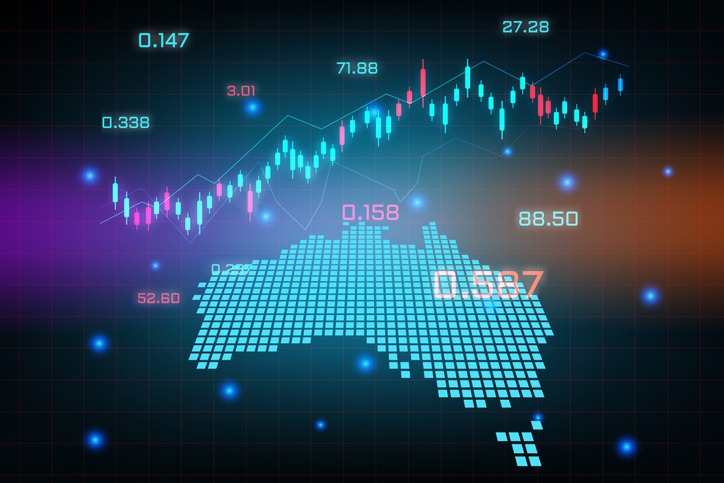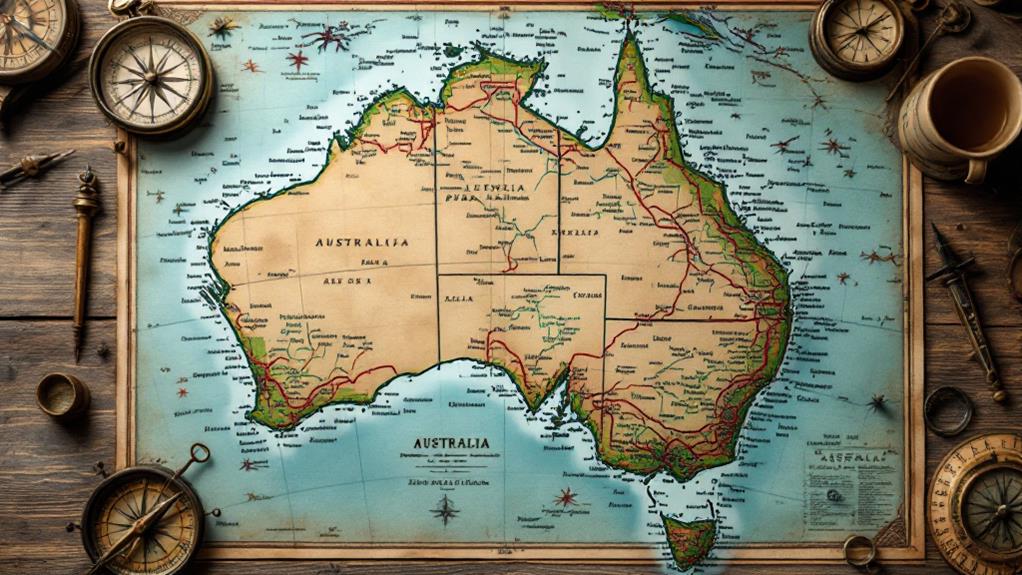What Type of Economy Does Australia Have? A Look at Economic Structure

Australia's economy is a mixed system where private businesses thrive with substantial government intervention. You'll see that services, especially finance and tourism, dominate, contributing 62.7% to the GDP and employing the majority. Meanwhile, mining stands out too, with exports like coal and iron ore being vital. The government plays a key role by setting economic policies and providing public services like healthcare and education. Natural resources support robust trade with East and Southeast Asia. With a AAA credit rating and a high Human Development Index, there's plenty more to uncover about its economic structure.
Overview of Economic System
Australia's economy is a robust and dynamic system that blends private enterprise with strategic government intervention. As a mixed economy, it boasts a nominal GDP of $1.98 trillion as of June 2021, reflecting its status as highly developed. You'll notice that the service sector is the dominant force, contributing about 62.7% to the GDP. This sector's prominence is mirrored in labor force distribution, with nearly 78.8% of Australians employed in services.
The mining sector also plays a crucial role, accounting for 5.8% of GDP. Australia's prowess as a leading exporter of goods like coal, iron ore, and natural gas highlights its global economic impact. Despite being smaller than the service sector, mining remains essential to the country's economic growth and export profile.
Government intervention supports these sectors through strategic policies that foster economic stability and growth. Australia has experienced the longest uninterrupted GDP growth among developed nations since March 2017, a reflection of its economic resilience. This sustained growth, averaging 3.4% annually from 1901 to 2000, underscores the effectiveness of its economic system in adapting to global market dynamics.
Key Economic Sectors
Exploring the key economic sectors of Australia, you'll find that the services sector leads the charge, contributing around 62.7% to the nation's GDP. This dominance underscores the significance of sub-sectors like finance, insurance, and tourism. With 78.8% of the workforce employed here, it's clear that services are fundamental for both economic output and job creation.
Apart from services, mining and construction are pivotal, each contributing about 5.8% to GDP. The mining sector taps into Australia's rich natural resources, providing critical exports that fuel international trade. Construction, on the other hand, supports infrastructure development, facilitating growth across the nation.
Although manufacturing represents only 5.8% of GDP, it signifies Australia's capability to produce goods across diverse industries. Despite being smaller in size compared to services, it remains significant for economic stability and export potential.
Agriculture, while accounting for 2.8% of GDP, plays a significant role in Australia's export economy. As a major exporter of wheat and beef, agriculture guarantees that Australia remains a global player in food production. Here's a snapshot of Australia's key economic sectors:
- Services: 62.7% of GDP
- Mining and Construction: 5.8% each
- Agriculture and Manufacturing: 2.8% and 5.8% respectively
Trade and Natural Resources

Australia stands as a powerhouse in global trade, particularly due to its abundant natural resources. As a major exporter, the country considerably enhances its economy through the mining industry, with coal and iron ore playing central roles. In 2018, Australia produced 481.3 million tons of coal, becoming the second-largest coal exporter worldwide. This impressive output is a key part of the economic structure, alongside iron ore and essential agricultural products like wheat, beef, and wool. These exports guarantee steady economic growth and sustainability.
The demand for Australia's natural resources is primarily driven by East and Southeast Asia, which made up 64% of total exports in 2016. This strong trade relationship underscores the significance of these regions in supporting Australia's export economy. However, it's not just about exports; imports are important too. In 2023, Australia's total imports were valued at A$526.8 billion, featuring crucial goods like petroleum, cars, and telecom equipment. These imports complement the country's economic structure by meeting domestic needs and supporting various industries.
Government's Economic Role
While Australia's robust trade and natural resources underpin its economic strength, the government's role is likewise vital in shaping the nation's financial landscape. The government in Australia greatly influences the economy by setting policies for interest rates and implementing fiscal measures to guarantee competition and consumer protection. By managing these areas, it helps maintain economic stability and growth.
You'll find that the government provides vital public goods like infrastructure, healthcare, and education, which are fundamental for societal welfare. Government spending acts as an economic stimulus by injecting funds into the economy, creating jobs, and supporting critical public services. This spending is supported by a multi-tiered taxation system, which includes personal income tax, business taxes, GST, and more. Although these taxes fund important services, they can also impact disposable income.
Here's how the government contributes to economic stability:
- Public Goods: Infrastructure, healthcare, and education.
- Economic Stimulus: Government spending promotes growth and job creation.
- Fiscal Management: Maintaining a AAA sovereign credit rating.
Ultimately, Australia's government guarantees a balanced approach, promoting growth and stability while safeguarding consumer interests.
Employment and Education Trends

Recent trends in employment and education reveal a dynamic and evolving landscape in Australia. As of August 2024, the unemployment rate is at 4.2%, reflecting a robust economic structure where labor force participation is at 67.1%. Youth participation is even higher at 70.8%, indicating a strong interest among younger Australians to engage in the workforce.
The healthcare sector stands out, accounting for 15.6% of total employment with roughly 2,228.1k individuals working in this area, highlighting a growing demand for workers in this crucial field. However, the underemployment rate remains a challenge at 6.5%, contributing to an overall underutilization rate of 10.6%.
Graduate employment rates vary widely; nursing graduates initially see just 24.7% employment, though this jumps to 70.3% post-initial, while the medical field impressively reaches 98.1%. This illustrates the economic system's differing demands across distinct fields.
Agricultural employment has also seen growth, from 295,495 in 2013 to 325,321 in 2015, underscoring the sector's resilience and importance. Overall, Australia's total labor force comprises about 14,294.2k employees, reflecting a diverse and adaptable workforce responding to changing economic needs.
Economic Indicators and Stability

Amid fluctuations in the global economy, Australia's economic indicators paint a picture of resilience and stability. With a current inflation rate of 7% as of March 2023, it's higher than the historical average of 2% to 3%, but the Australian economy remains robust. The country's poverty rate was 13.4% in 2020, highlighting moderate economic disparity. However, Australia's Gini coefficient of 33.0 in 2021 shows a medium level of economic inequality, which isn't excessively alarming compared to global standards.
Australia consistently achieves high marks in fiscal stability, as demonstrated by its AAA sovereign credit rating, surpassing even the USA. This creditworthiness reflects the country's strong economic foundations and prudent fiscal management. Additionally, the Human Development Index (HDI) was an impressive 0.946 in 2022, indicating a very high standard of living and quality of life.
Let's break down these points:
- Inflation and Inequality: Despite a 7% inflation rate, the Gini coefficient and poverty rate suggest manageable economic inequality.
- Quality of Life: The country's HDI of 0.946 showcases a high standard of living.
- Fiscal Stability: An AAA rating underscores Australia's creditworthiness and economic resilience.




